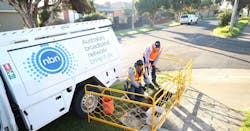IEEE Spectrum unravels how Australia's stumbling NBN delivers a fraction of what was promised
As reported by IEEE Spectrum's Michael Koziol:
On 18 May, voters in Australia’s federal election will determine whether the Liberal-National Coalition will remain in control or the Australian Labor Party will win the government. Either way, the new leaders will have to contend with the National Broadband Network (NBN), a lumbering disaster that began as an ambitious effort by the Australian government to construct a countrywide broadband network.
When the NBN was first proposed in April 2009, the government aimed to build a fiber-optic network that would deliver connections of up to 100 megabits per second to 90 percent of Australian homes, schools, and workplaces within eight years. A decade later, however, the NBN has failed to deliver on that promise. NBN Co., the government-owned company created to construct and manage the network, now expects to deliver 50 Mb/s connections to 90 percent of the country by the end of 2020.
“None of the promises have ever been met,” says Rod Tucker, a telecommunications engineer and professor emeritus at the University of Melbourne.
"The rationale behind the FTTN pivot was that there’s no need to lay #fiber to homes and offices because #copper landlines already connect those buildings. Unfortunately, copper doesn’t last forever." https://t.co/uWlSR4q1P1
— Cabling Tweets (@CablingTweets) April 24, 2019

